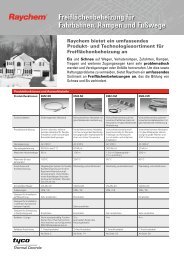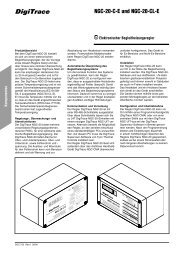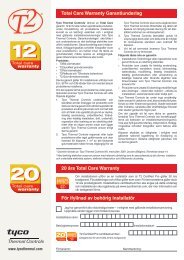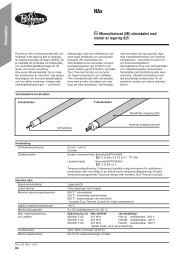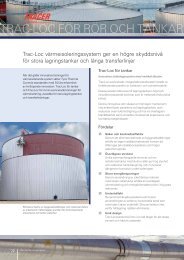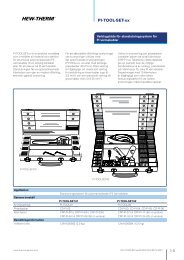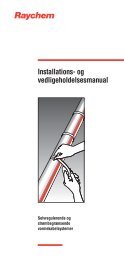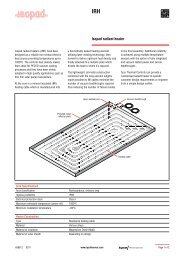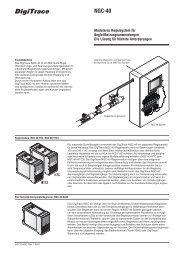Installation, Maintenance and Operation Manual - Tyco Thermal ...
Installation, Maintenance and Operation Manual - Tyco Thermal ...
Installation, Maintenance and Operation Manual - Tyco Thermal ...
You also want an ePaper? Increase the reach of your titles
YUMPU automatically turns print PDFs into web optimized ePapers that Google loves.
3<br />
of the heating cable defined by the design is suited for the<br />
application.<br />
Changing any major design parameters like voltage<br />
or cable length will result in power output other than<br />
designed, which may require a redesign of the entire<br />
system. To prevent overload of the heating cable, fire or<br />
explosion in hazardous areas, verify that the maximum<br />
sheath temperature of the heating cable is below T-class<br />
or auto-ignition temperature of the gases <strong>and</strong>/or dusts<br />
possibly present in those areas. For further information,<br />
see design documentation<br />
(e.g. TraceCalc Pro reports).<br />
Check the design specification to ensure the proper<br />
heating cable is installed on each pipe or vessel.<br />
Refer to <strong>Tyco</strong> <strong>Thermal</strong> Controls product literature to select<br />
an appropriate heating cable for each thermal, chemical,<br />
electrical <strong>and</strong> mechanical environment.<br />
Heating cable storage<br />
D Store the heating cable in a clean, dry place<br />
D Temperature range: –40°C to +60°C<br />
D Protect the heating cable from moisture or mechanical<br />
damage<br />
Heating cable installation<br />
Warning<br />
As with any electrical equipment or wiring installation<br />
that operates at line voltages, damage to heating cable<br />
<strong>and</strong> components, or incorrect installation that allows the<br />
penetration of moisture or contamination can lead to<br />
electrical tracking, arcing <strong>and</strong> potential fire hazard.<br />
Any unconnected heating cable end, exposed to the<br />
environment, must be sealed appropriately.<br />
3.1 Pre-installation checks<br />
Check design recommendations:<br />
D Verify that you have all required engineering documents<br />
supporting the installation.<br />
D Check for any special instructions in engineering documentation<br />
(e.g. fixation method, use of metal mesh etc...).<br />
D Verify that the hazardous area information given in the<br />
engineering documentation is compatible with the area classification<br />
the material will be installed in.<br />
7



